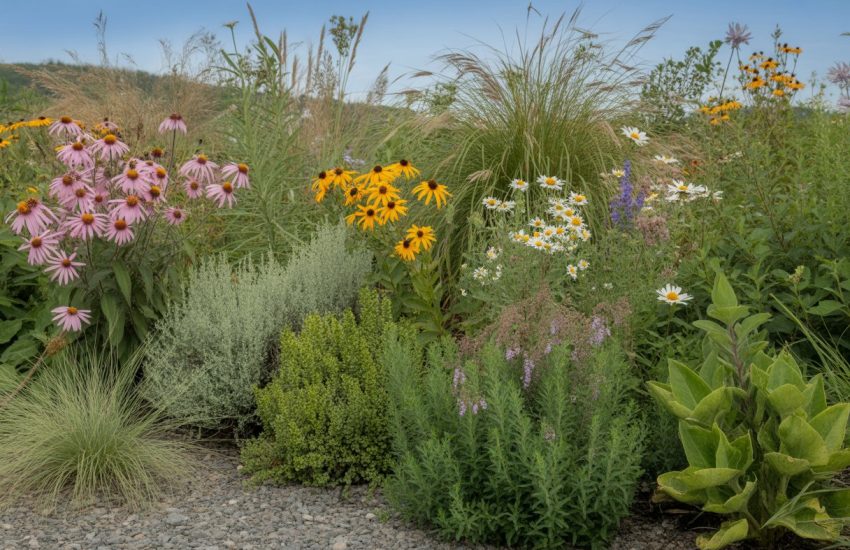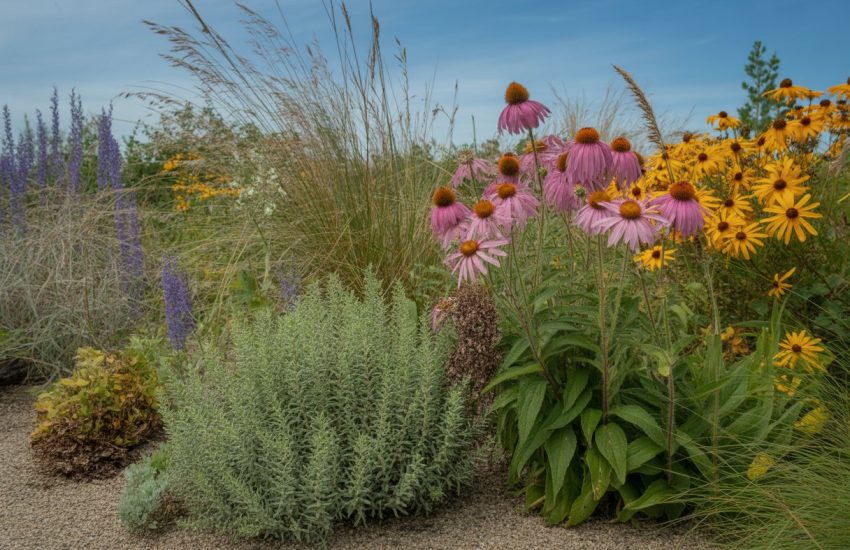Pennsylvania Native Flowering Shrubs for Your Garden
Pennsylvania is home to many beautiful native flowering shrubs. Shrubs are an excellent way to add color and interest to your garden and are relatively easy to care for. This article discusses the Pennsylvania native flowering shrubs for your garden.
Hamamelis Virginiana
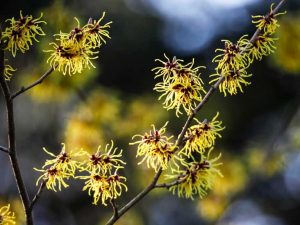
This plant is also known as the common Witch hazel. This shrub rises to about 15 feet tall and has yellow flowers bloom in the fall. Witch hazel is an excellent choice for a garden because it is relatively easy to care for and is tolerant of various soil types.
The familiar Witch hazel is found throughout Pennsylvania. They are best for naturalistic gardens or for adding fall color to your garden. It fits in environments ranging from full sun to partial shade. It prefers moist, well-drained soils but can tolerate various soil types.
Kalmia Latifolia
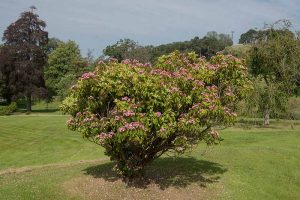
Kalmia is also called the mountain laurel. This shrub grows about 15 feet tall and has pink flowers blooming in the summer. They flourish in full sunshine, but they can endure some shade.
The mountain laurel is a common sight in Pennsylvania’s eastern and central portions. Most people love their magnificent flowers, but mountain laurels are valuable for wildlife. The nectar of the flowers attracts bees and butterflies, while the leaves provide food for caterpillars. Mountain laurels thrive in direct sunlight, although they can endure part shade. When grown in partial shade, they may not produce as many flowers.
Viburnum Dentatum
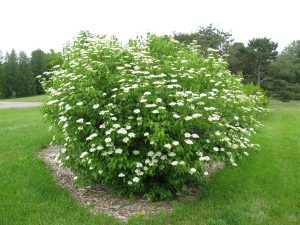
Viburnum dentatum also referred to as the arrowwood viburnum, is a white flower that buds in the spring, and this shrub breeds to the height of 15 feet. Gardeners love arrowwood viburnums because they are adaptable to various soil types and light conditions.
The Viburnum dentatum is a shrub found in woodlands throughout Pennsylvania. The environment that they are best suited for depends on the variety. Some arrowwood viburnums prefer full sun, while others prefer partial shade. They are used to understory plants, so they do not need direct sunlight. Plant it in moist, well-drained soil to get the best of the viburnum dentanum.
Clethra Alnifolia
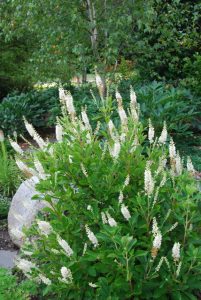
This plant, also recognized as the sweet pepper bush, is white or pink flowers that bloom in the summer, and the height reached by a typical driveway is six to eight feet. They’re adaptable, low-maintenance, and thrive in various soil conditions.
The sweet pepperbush is indigenous to Pennsylvania, where it grows in woodlands, marshes, and along streams. It is advised that you plant this shrub in moist, well-drained soil. Give the sweet pepperbush room to grow because it can reach 20 feet. Bees and butterflies love this plant. People who buy it use it for mass plantings, hedges, and screens.
Ilex Verticillate
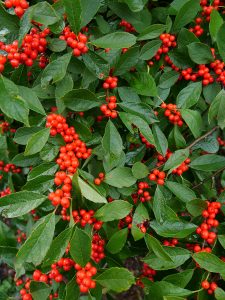
This Pennsylvania endemic flowering shrub is also identified as the winterberry. For it to grow, gardeners need to have both a male and female plant. The male plant provides pollen for the female plant, which produces berries. The red berries are made in the fall and persist into winter. The best environment for winterberry shrubs is in full sun to partial shade with moist, well-drained soils. The flowers of this plant appeal to bees, birds, and butterflies in the area.
Wild Blue Phlox
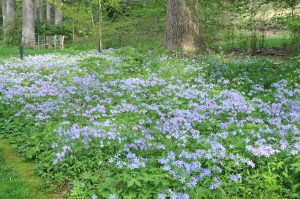
This plant has pale blue to lavender flowers and blooms in late spring. This shrub can be found on the roadside of many highways and prefers full sun. It grows to be about two feet tall. Bees love the nectar of the wild blue phlox.
The flowers of wild blue phlox have a clove-like fragrance and are part of the mint family. People love to use it as an ornamental plant in their gardens.
<
Goldenrod
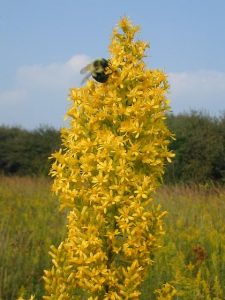
This plant has attractive yellow flowers and blooms in the summer. It breeds in meadows, fields, and roadsides. Goldenrods are a food source for many animals, including birds, bees, butterflies, and small mammals. The plant is a remedy for various ailments such as colds, fever, and inflammation.
Goldenrods can be used as a dried flowers in arrangements. The plant is used in making dyes and perfumes. It belongs to the Aster family. For the green rod to produce its flowers, it needs full sun and well-drained soil.
Virginia Bluebells
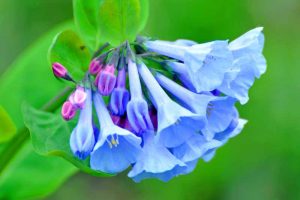
This plant has blue to purple flowers and blooms in the spring. The name “bluebell” is derived from the shape of the flowers, which resemble a bell. It is considered threatened in Pennsylvania because of the loss of habitat.
The plant does not tolerate drought or compacted soils. When the Virginia bluebell blooms, it creates a carpet of color that is sure to please any. The plant gets its food from the decomposition of leaves and other organic matter in the soil.
Blue Flag Iris
The Blue flag plant iris has blue flowers and blooms in the spring. It’s found in marshes, bogs, and streams. The blue flag iris is the state flower of Louisiana with five species of iris, including the northern blue flag, southern blue flag, yellow flag, western blue flag, and sweet mountain flag. This plant grows in large colonies and can reach three feet. The blue flag iris is an Iris species.
Lupine
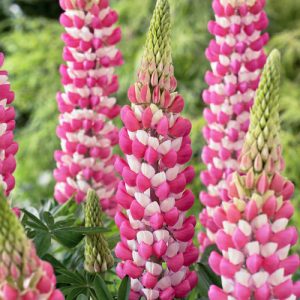
This plant has blue, pink, purple, or white flowers and blooms in the spring. Hummingbirds and bees adore them. The lupine is a legume and fixes nitrogen in the soil via its roots. This makes it an excellent plant to grow with other plants because it enriches the soil.
The lupine is deer resistant and can be used as a ground cover. It does best with moist, well-drained soils in full sun to partial shade.
Spotted-touch-me-not
This plant has yellow flowers with red spots, and The spotted-touch-me-not plant is unique because the flowers close up when touched. It is quickly grown from seed and blooms in the summer.
It grows annually up to two feet in height. When submerged in water, the plant produces oxygen. Its leaves are a food source for fish and other aquatic creatures. The spotted-touch-me-not has two types of flowers: the regular and the long-spurred flowers.
The regular flower has five petals, and the long-spurred flower has ten petals. Bees pollinate the long spurred flower, and the typical flower is pollinated by wind.
Cardinal Flower
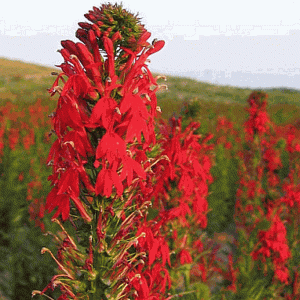
The cardinal flower is a figwort. It’s lovely, generous, and well-suited to any outdoor space. It’s a fantastic way to brighten up your room.
It features three-lobed leaves and tall spikes of tubular flowers. The tubular flowers have unique markings that resemble a human face. Animals are attracted to the cardinal flower because of its nectar.
Swamp Milkweed
The Swamp milkweed has many names: rose milkweed, pink milkweed, or Asclepias incarnata. It is a permanent three-foot plant with tiny flowers clustered at the top of its long stems.
It takes its name from the fact that it grows in marshes and swamps. It is of the Asclepias genus in the family Apocynaceae which contains over 140 species of plants, including oleanders and periwinkles.
The swamp milkweed is an essential plant for Monarch butterflies. The Monarch caterpillars feed on the leaves of the plant, and the plants provide shelter and food for the adult butterflies.
Marsh Blazing Star
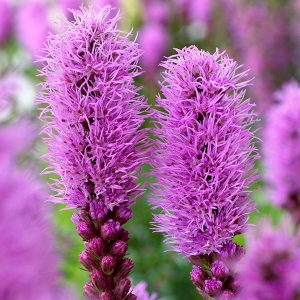
The Marsh blazing star grows four feet when grown outdoors. It has blue or lavender flowers that smell like vanilla.
The vanilla smell attracts bees, butterflies, and insects to the flower. Gardeners use the Marsh blazing star for cutting flowers and as a border plant. It has purple tufted flowers arranged in a spike and is a host plant for the skipper butterfly.
Black-eyed Susan
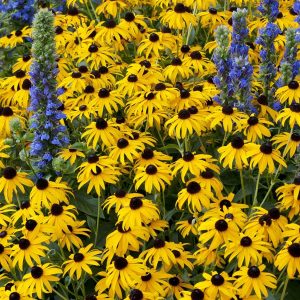
The black-eyed Susan is a Pennsylvania native plant classified as a sunflower. Its scientific name is Rudbeckia hirta. The black-eyed Susan is two feet and has yellow or gold flowers with a black center.
It is famous for its long blooming period. The black-eyed Susan is suitable for cutting and drying. It is an attractive ornamental plant that may be grown in pots. The plant does best in full sun with moist to dry soils.
Wild Indigo
The wild has blue or violet flowers. Baptisia tinctoria is the scientific name for the plant. It’s a pea relative, and its name comes from the Latin word “tinctorius,” which means “of the tincture.”
Native Americans used wild indigo for dyeing cloth. The flowers and leaves of the plant are used to make a blue or violet dye. The plant thrives in direct, whole light with well-drained soil.
Common Milkweed
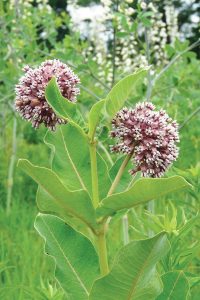
In Pennsylvania, the typical milkweed grows throughout the year. It has pink or white flowers, and its scientific name is Asclepias syriaca.
Because the leaves of this plant break with a milky liquid, it is called common milkweed. This substance contains latex which can be used to make rubber. The plant is a host plant for Monarch butterflies.
Gardeners buy it for its beautiful flowers and its usefulness as a host plant. Its leaves are used in salads, and the flowers are used to make tea.
Foam flower
The foam flower is a non-seasonal plant that reaches a height of six inches. It has white flowers, and its scientific name is Tiarella cordifolia.
The foam flower gives off a frothy substance when the leaves are crushed. This substance was once used to make shaving cream. The plant does best in partial shade with moist, rich soil. It is a good ground cover for shady areas.
Golden Ragworts
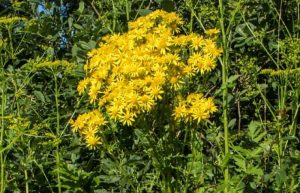
The golden ragworts are annual plants that are two feet tall. They have yellow flowers, and their scientific name is Senecio aureus.
The golden ragwort name is because the plant blooms in the spring and early summer. It’s a fantastic herb for making herbal tea and drying. It’s best when used fresh.
Obedient Plant
The obedient plant is a perennial plant that grows to a height of three feet. It has pink or white flowers, and its scientific name is Physostegia virginiana. Its features are unique tubular flowers that bloom in the summer.
Its name comes from the fact that the flower heads can be pushed in any direction and stay in that position. The best environment for this plant is moist, rich soil in full sun to partial shade. People use it to make herbal tea and as a decoration in bouquets.
Butterfly Weed
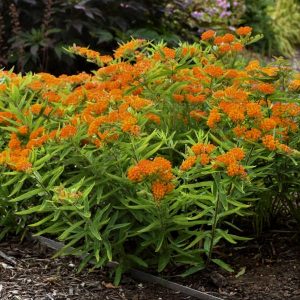
The butterfly weed is an annual plant that grows to two feet. It has orange or yellow flowers, and its scientific name is Asclepias tuberosa. The butterfly weed gets its name from being a host plant for Monarch butterflies. The plant is used in landscaping and as a cut flower.
Final Thoughts
These Pennsylvania native plants are great for any garden and thrive in Pennsylvania’s climate. So whether you are looking for a plant to add color to your garden or attract wildlife, one of these Pennsylvania native plants is sure to be a perfect fit.

